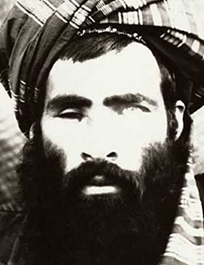Multi-Deaths Again, Al Qaeda Leaders “Have Nine Lives”. “Taliban Leader Mullah Omar, the Man of Many Lives and Many Changes”

Affirmations of death in this line are never reliable. The entire saga about Osama bin Laden’s body was one such example. He became the fantastic figure of the terrorist imaginary, a moralist surge that place a head on a problem. While there was nothing imaginary about what happened in terms of al-Qaeda’s attacks, there was something distinctly spectral about Osama. Even when he was officially slain in the Abbottabad compound, accounts of how his body were dealt with did not seem to add up. The doubters crew in number. Accounts multiplied.
 Omar
has not quite been able to boast that same line of survivability and
rumour, though he has come close. From 1994 to 2001, he reigned as Amir
in devastated Afghanistan, muddling through the tribal politics and
becoming a figure of consequence in a brutal, theocratic regime.
Omar
has not quite been able to boast that same line of survivability and
rumour, though he has come close. From 1994 to 2001, he reigned as Amir
in devastated Afghanistan, muddling through the tribal politics and
becoming a figure of consequence in a brutal, theocratic regime.When the American-led invasion of Afghanistan commenced, US forces supposedly came close to killing Omar. They certainly got his son. Wanted posters were put out. The US State Department mimicked the language of cowboys and Indians – namely that of President George W. Bush. On its “Rewards for Justice” page, Omar gets a special spread. “Although Operation Enduring Freedom removed the Taliban regime from power, Mullah Omar remains at large and represents a continuing threat to America and her allies.”[2]
The rumour mill kept its inexorable grind, either focusing on physical ailment as the cause of death (the bogeyman must also be terminal) or military incident. In July 2011, the Taliban’s Website was duly hacked, leading to the remark that Omar had died “after an illness of the heart”. Not so according to Alex Strick van Linschoten, a Dutch researcher stationed in Kandahar since 2007. Strick van Linschoten took the prisoner angle: that Omar, far from having any agency or movement, was “essentially a prisoner” in a safehouse.
In 2012, the spectral Omar networked in the halls of the imaginary, finding himself in the camp of the dead and the living. Arsala Rahmani of the Karzai government’s High Peace Council was unclear as whether “he’s still alive or what his position is.” Forwarding this matter to current times, and you have speculations about how his death (life at rest?) would spell difficulty for the various Taliban factions negotiating over the issue of peace.
This year, the living-dead Omar had come out to bat for the Afghan peace talks, with his statements sounding much like committee decisions.
“Concurrently with armed jihadi, political endeavours and peaceful pathways for achieving these sacred goals is a legitimate Islamic principle and an integral part of Prophetic politics.”The busy Omar was putatively engaged in creating a “Political Office” tasked “with the responsibility of monitoring and conducting all political activities.”[3] But the leader also went further, suggesting that a united jihadi front had to be maintained against those “who attempt to create differences” and “damage” that front. The target in that case was ISIS and the ambitions of Abu Bakr al-Baghdadi, the ideological soul giver of ISIS who had upstaged Omar in the extremist polling contest.
There were also accounts from intimates. Sami Yosafzai was told a different story – by a self-proclaimed member of Omar’s circle of family friends. Omar was, according to this member, dead. There was no speedy exit, or sly escape. That cat of many lives was dead. The Taliban would have a new leader: Amir-ul-Momineen. In the meantime, the cloak of secrecy would be maintained. Even the Taliban believe in keeping up appearances.
Then came the latest revelations, if one can even call them that. BBC’s Afghan Service was told that Omar died of health problems at a Pakistan hospital in 2013. The broadcaster would even relent some dark humour here. “The latest reports of Mullah Omar’s death are being taken more seriously than previous such reports.” Rank them; rate them. The office of Afghanistan’s President Ashraf Ghani certainly weighed in, claiming that the latest news was “based on credible information”.
Credibility has not tended to be a term associated with Afghan security dispatches, but we are encouraged to assume. In some ways, even less credible sources have been found in Pakistan. A security official could simply say that, even as peace talks between the Taliban and the Afghan government were taking place, one could not really be sure if Omar was actually dead. The point always pivoted on that old deception, one also used with bin Laden: that Pakistan could possibly provide refuge to the Taliban leader. In the factory of lies, one more doesn’t really matter. The living dead tend to last.
Dr. Binoy Kampmark was a Commonwealth Scholar at Selwyn College, Cambridge. He lectures at RMIT University, Melbourne. Email:bkampmark@gmail.com
Notes
No comments:
Post a Comment